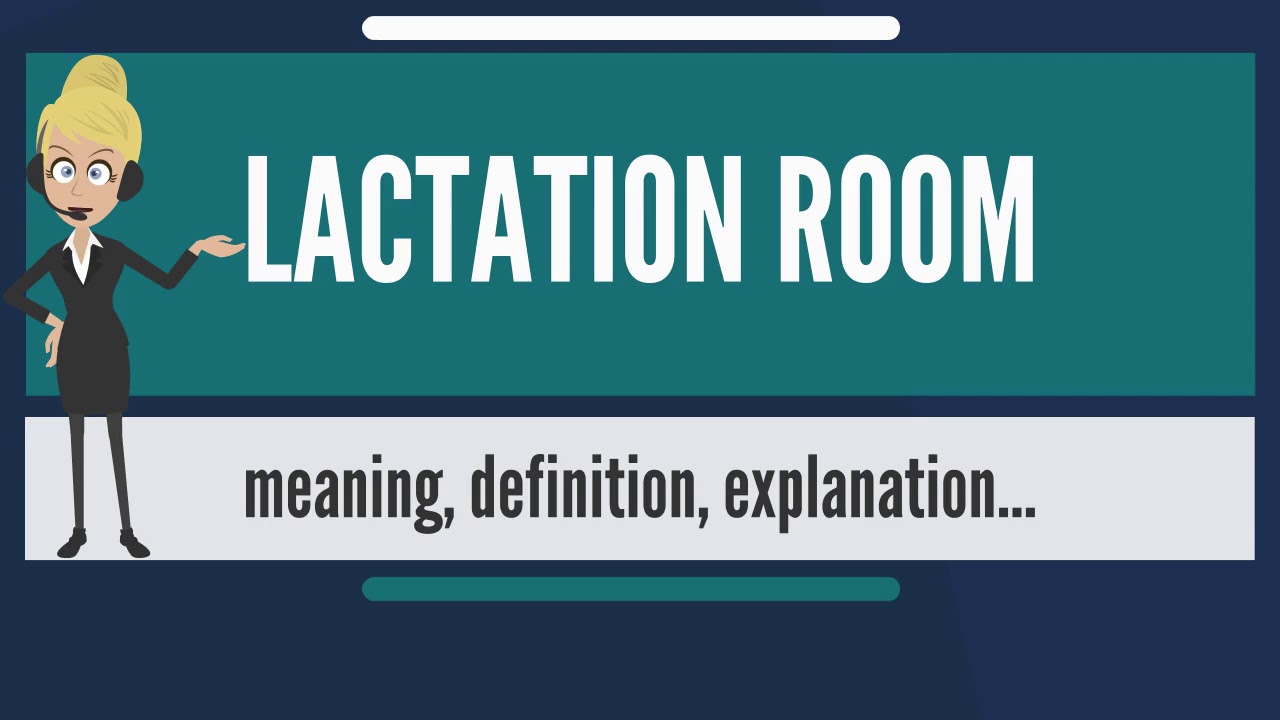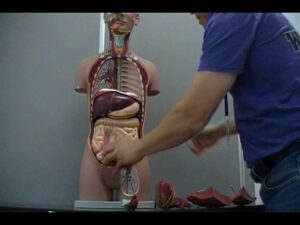✪✪✪✪✪ http://www.theaudiopedia.com ✪✪✪✪✪ What is LACTATION ROOM? What does LACTATION ROOM mean? LACTATION ROOM meaning – LACTATION ROOM definition – LACTATION ROOM explanation. Source: Wikipedia.org article, adapted under https://creativecommons.org/licenses/by-sa/3.0/ license. SUBSCRIBE to our Google Earth flights channel – https://www.youtube.com/channel/UC6UuCPh7GrXznZi0Hz2YQnQ Lactation room (or Lactorium) is an American term for a private space where a breastfeeding woman can use a breast pump in private. Lactation rooms provide breastfeeding mothers with a private space to pump or nurse. While lactation spaces existed prior to the 2010 Patient Protection and Affordable Care Act, the amended Section 4207 of the Fair Labor Standards Act requires employers with 50 employees or more to provide a private space for nursing mothers that’s not a bathroom. Over the past decade, lactation rooms have become widely popular in the US business setting. The reason for this development is that “mothers are the fastest-growing segment of the U.S. labor force. Approximately 70% of employed mothers with children younger than 3 years work full time. One-third of these mothers return to work within 3 months after giving birth and two-thirds return within 6 months. Working outside the home is related to a shorter duration of breastfeeding, and intentions to work full-time are significantly associated with lower rates of breastfeeding initiation and shorter duration”. In addition, breastfeeding benefits employers as breastfeeding results in decreased health claims, increased productivity, and fewer days missed from work to care for sick children. One example of the benefits provided to businesses and employees by establishing a corporate lactation program is that of CIGNA, the national employee benefits company. In 1995, CIGNA established the “Working Well Moms” program, which provided lactation education program and lactation rooms. In 2000, CIGNA and the UCLA conducted a study of 343 breastfeeding women who were taking part in CIGNA’s program. The study revealed a savings of $240,000 annually in health care expenses for breastfeeding mothers and their children, and a savings of $60,000 annually through reduced absenteeism among breastfeeding mothers at CIGNA. In addition, the study found that “breastfeeding duration for women enrolled in the Working Well Moms program is 72.5% at six months compared to a 21.1 percent national average of employed new mothers.” Generally, a lactation room includes a refrigerator, sink, cleaning supplies, table, and comfortable chair. The ability to pump throughout the day allows mothers to keep up their milk supply and enables them to save and take home the nutrient-rich milk they have pumped.

What is LACTATION ROOM? What does LACTATION ROOM mean? LACTATION ROOM meaning & explanation
- Post author:
- Post published:May 29, 2021
- Post comments:0 Comments
You Might Also Like

Protein Structure – Primary – Secondary – Tertiary – Quaternary – Structure of Protein

Pregnancy Tips – 1st Trimester Cooking & Nutrition

What Is An Amino Acid? | Dr.Berg

High Pulley Overhead Tricep Extension (rope extension)

Bioenergetics Video – 2

Abhyanga – Ayurved Video – 2

Insulin 2: What is glucagon?

Enalapril Maleate 5 mg 10 mg 20 mg tablets and side effects

TRX Warmup

Seated Cable Row Targeting Mid and Upper Back

Why You Got Fat

Diabetes: Foot care

Internal organs of human body model

What Does 1RM Mean in Strength Training?

Gynecomastia Male breast Correction

HOW TO MAKE PROTEIN POWDER AT HOME FOR BODYBUILDING | AMIT PANGHAL | PANGHAL FITNESS

Taekwondo stretching exercises

What is Arthritis? – Arthritis Types and Basic Information – Dr. Rakesh Aggarwal – Tell Me Doctor

BCAA Supplements – What Are BCAA’s And How Do They Work? | GuruMann Review

Muscle Building Workout & Squats Video – 7

I Have High Liver Enzyme Levels. What Does It Mean?

Best Workout Rep Range (CLASSIC MISTAKE!)

How the Endocrine System Works

Sports Nutrition & Supplementation Video – 1

The Suprising Facts on How and Where Exactly Thyroid Hormones Are Made

Anesthesiology Video – 3

Propranolol

HOW TO REMEMBER HUMAN SKELETON 206 BONES – PART I SKULL

Do You Know The Warning Signs of Heart Disease?

Exercise Tutorial: Machine Upper Back Row

Erector Spinae Back Extension-18

Enzymes Video – 1

What is Osteoporosis?

Fat & Water Soluble Vitamins!

Zumba Dance Workout for weight loss
During Workout Nutrition

Exercises With Cones : Fitness Training Exercises

Instructional Fitness – Flat Bench Flies

Wellen’s Syndrome – ECG (High Risk for Myocardial Infarction)

The best and only licensed medicine for weight loss -orlistat

Uses of Cheapest Vitamin B Complex with B12 NEUROBION FORTE

